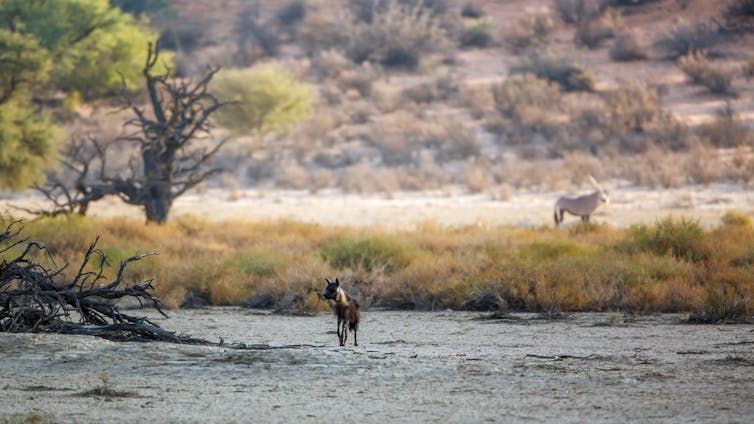If you know anything about the experiences of animals reared in captivity for food, fur or human amusement, you might imagine that the lives of wild animals are idyllic. If nature is conceived as a sort of Garden of Eden then animals which live in it, free of human interference, are presumably living their best possible lives.
Others see life in the wild as far harsher. Nature is “red in tooth and claw” as poet Alfred Tennyson once put it. According to this view, the average life of a wild animal can be best understood as a desperate search for food and shelter, enduring pain and sickness and burdened with the ever-present prospect of a savage death.
This latter view is arguably dominant among those who ponder questions of wild animal ethics and welfare. Scholars like Yew-Kwang Ng and Oscar Horta have aimed in part to debunk the view that wild animals have it pretty good by evoking the prevalence of vicious predators and other sources of harm. Yet this picture may be just as inaccurate.
In our recent paper, we argued that the real experience of wild animal life most likely sits somewhere between these two extremes – though it’s probably a lot better than many researchers think.
The popular view of wild animals being consumed by suffering has been influenced by a preoccupation with their experiences at the time of their deaths. Too little attention has been paid to the range of positive experiences available to wild animals throughout their lives.
Death is fleeting
Consider an antelope pursued by a pack of hungry hyenas: it eventually tires, is captured and eaten alive. The common occurrence of predation like this suggests animal suffering is widespread. But it is worth thinking about these events a little more closely, as they may not cause as much suffering as it first seems.

It is well-documented in humans that major injuries often do not hurt much at first, due to a spike in adrenaline that blocks the immediate sensation of pain. Studies on animals have suggested that similar chemical pathways may activate in their nervous systems when facing fear or injury. This means that many experiences of predation could be more numb than painful.
Even if animals do suffer as they die this should not define their welfare over their entire lives. Death, particularly in the jaws of a predator, is short relative to the length of an animal’s life. Even a slower death, like the antelope’s, lasts minutes rather than hours. Not an experience anyone would want to go through, but not necessarily one that tips the balance of a life into negative.
Some animals follow a breeding strategy in which they produce lots of offspring, most of which will die off very quickly and never make it to maturity. For these animals, with short lives and violent ends, is the balance more likely to be negative? Perhaps, in some cases. But it is important even in these instances not to underestimate the potential for positive experiences in the time they have.
The joy of living
To judge the quality of an animal’s life we must consider the whole experience, not just select the worst parts.
A life contains a range of experiences – many negative ones, as researchers who document wild animal suffering point out – but also a range of positive ones. We could make a list of all the bad things that wild animals encounter: predation, starvation, thirst, disease, parasites, poor weather, aggression from members of their own species. Looking at this list might convince us that their lives must be bad. But we can write an alternative list of the good things they also enjoy: social contact, eating, mating, resting comfortably, playing, exploring, perceiving vistas or sounds or smells that they like.

One concept that may be important here is that of the joy of living. This idea describes the possibility of a baseline experience that all animals have that is itself positive. This could help animals stay motivated.
We can see in cases of human depression that one of the main symptoms is a lack of motivation and an unwillingness to move. For an animal needing to acquire food and other things necessary to live, this could mean death. So for evolutionary reasons it would be logical for the baseline experience of animals to be at least slightly positive. It is plausible that just being alive, perceiving, exploring, and experiencing the world, could itself bring happiness to animals.
Putting the lists side-by-side, it’s no longer so obvious that wild animal lives are, on balance, bad ones. It becomes far more dependent on the interplay of positive and negative experiences, their intensity, how often they occur and for how long, and how the animal weights their importance. Some species might have substantially better lives than others.
A superficial look at the lives of animals in the wild will not allow researchers to draw meaningful conclusions about what this balance is like for them. Instead, empirical research conducted in the field could uncover the intensity and duration of the different experiences wild animals face and how they affect their welfare. Researchers in the emerging field of wild animal welfare research already do this, supported by organisations like the Wild Animal Initiative.
This is not idle musing. Understanding the lives of wild animals could make interventions to alleviate some widespread sources of suffering – such as disease outbreaks or pest control – more accurate and infringe less on positive experiences.
We won’t know for sure until more information is gathered, but we have argued that there are several good reasons to suspect that such research will show that many – if not most – wild animals do in fact have happy lives.
Lecturer in Philosophy, University of Southampton